The Unified Model
These observations and arguments all suggest that active
galaxies are powered by material accreting onto
a massive central black hole in the nuclei of galaxies.
What does the nucleus look like?
Anatomy of an active galactic nucleus:
Central black hole
Accretion disk: hot,
luminous gas accreting onto the black hole.
Jets: charged particles
moving at relativistic speeds out of the nucleus
Broad-line region:
Gas clouds near the accretion disk, turbulent motions at high speed.
Dusty torus: a ring of denser gas and dust surrounding
the nucleus.
Narrow-line clouds:
Gas clouds further out, moving more slowly.
To achieve the necessary luminosity, ~ 1-10
Msun/yr must be accreted onto the black hole.
|
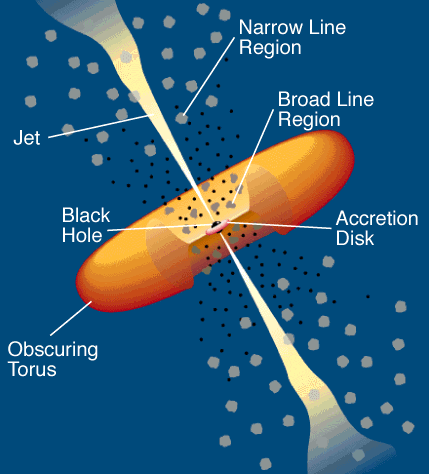
|
How does this "unify" the different classes of active galaxies? Largely through viewing angle:
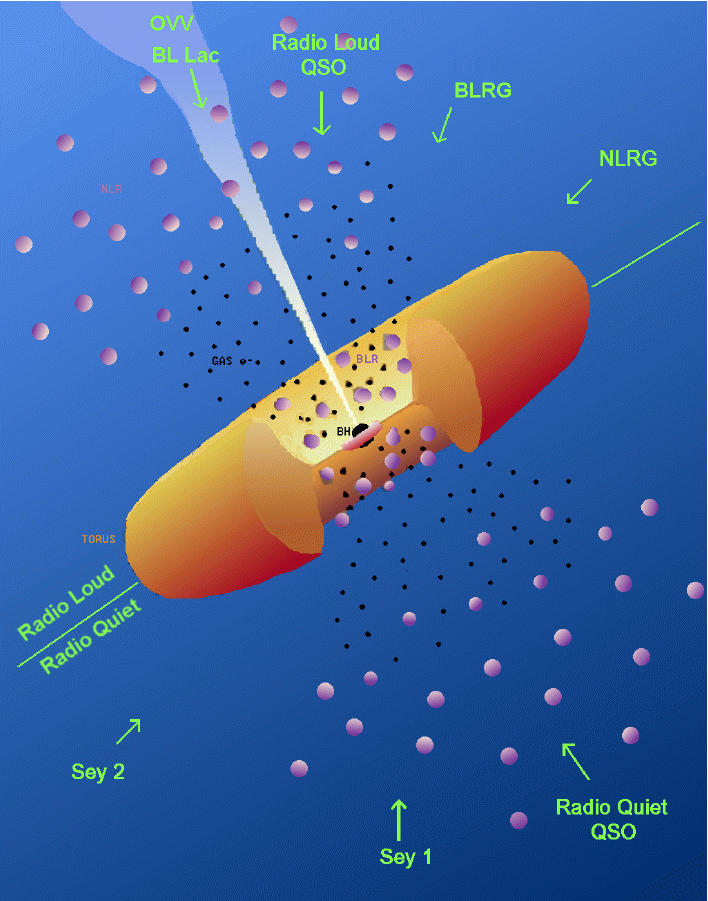
So Seyfert galaxies, radio galaxies, and
quasars are similar objects -- accretion powered active nuclei.
Real physical differences exist in things like total luminosity (quasars
vs seyferts) or in radio power (seyferts
vs quasars/radio galaxies) or in host galaxies
(seyferts vs radio galaxies).
Is there direct observational support for this?
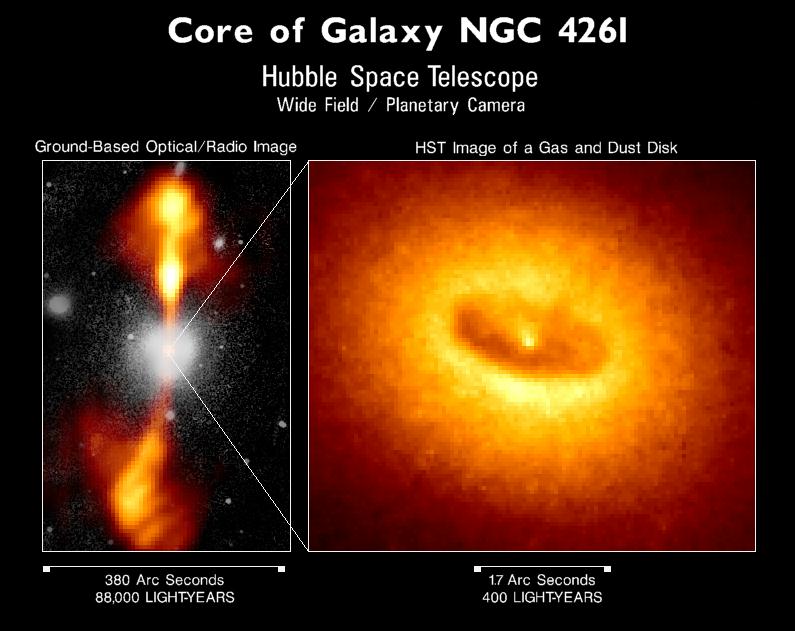
(Note that we are not seeing the accretion disk or the obscuring torus here; this is a disk of gas and dust much further out!)
What triggers this activity?
1. What do the host galaxies
of quasars look like?
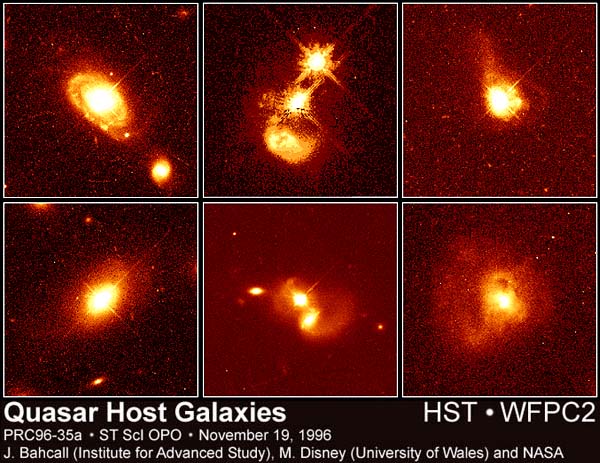
These disturbed hosts suggest that quasars form
when galaxies are experiencing interactions or gravitational perturbations.
2. When were quasars most
active?
We can look at the distribution in redshift of
quasars. They occur much more frequently at high redshift, meaning they
are very far away, so we are seeing them as they were long ago. We
are actually looking at the early universe.
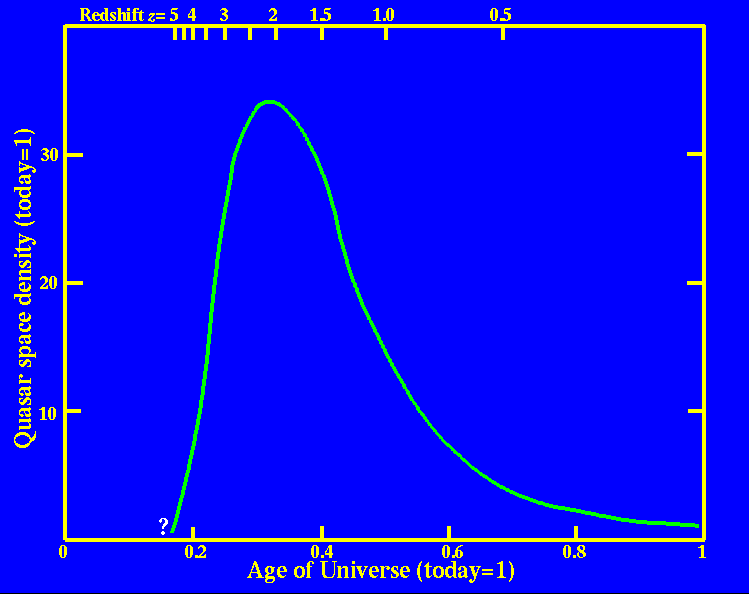
(courtesy Bill Keel, University of Alabama)
Quasars formed when the universe was young, probably
coincident with the violence associated with galaxy
formation. They quickly died out after that -- only a very few
remain.
Question: If quasars are associated with galaxy
formation, what should we find in the centers of nearby galaxies?




